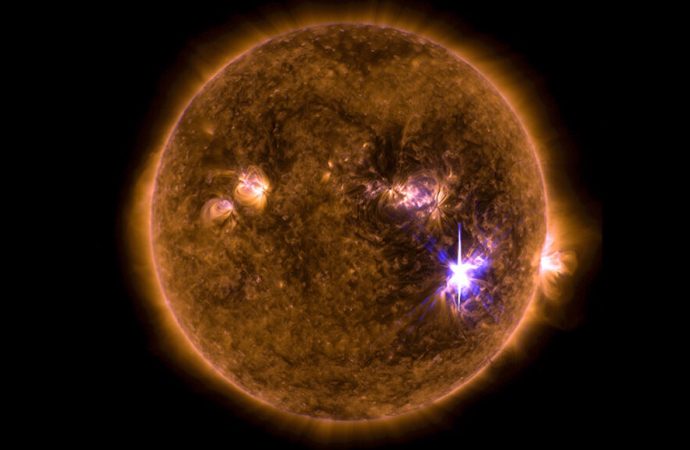Large outbursts of radiation from the sun can damage infrastructure on Earth
Source: Science News
Space weather forecasting is a guessing game. Predictions of outbursts from the sun are typically based on the amount of activity observed on the sun’s roiling surface, without accounting for the specific processes behind the blasts.
But a new technique could help predict the violent eruptions of radiation known as solar flares based on the physics behind them, researchers report in the July 31 Science. When applied to old data, the method anticipated several powerful flares, although it missed some as well.
Radiation released in solar flares and associated eruptions of charged particles, or plasma,can be harmful. This space weather can disrupt radio communications, throw off satellites, take down power grids and endanger astronauts. More accurate forecasts could allow operators to switch off sensitive systems or otherwise make preparations to mitigate negative effects.
Current prediction methods rely on tracking flare-linked phenomena such as large, complex sunspots — dark regions on the sun’s surface with powerful magnetic fields. But that leads to some false alarms.
In contrast, the new prediction method is rooted in the intricacies of how and when the sun’s tangled loops of magnetic fields rearrange themselves, in a process known as magnetic reconnection, releasing bursts of energy that mark solar flares.
On the sun’s surface, magnetic fields can get gnarly. Magnetic field lines, imaginary contours that indicate the direction of the magnetic field at various locations, loop and cross over one another like well-mixed spaghetti. When those lines break and reconnect, a burst of energy is released, producing a flare. The details of how and under what conditions this happens have yet to be unraveled.
In the new study, physicist Kanya Kusano from Nagoya University in Japan and colleagues propose that the largest flares result when two arcing magnetic field lines connect, forming an m-shaped loop, as a smaller loop forms close to the sun’s surface. This “double-arc instability” leads to more magnetic reconnection, and the m-shaped loop expands, unleashing energy.
Using 11 years’ worth of data from NASA’s Solar Dynamics Observatory spacecraft, the researchers identified regions on the sun with high magnetic activity. For each region, the team determined whether conditions were ripe for a flare-inducing double-arc instability, and then aimed to predict the most powerful flares the sun produces, called X-class flares. The technique correctly predicted seven of nine flares that passed a threshold that the researchers chose, called X2, the second strength subdivision of the X-class.
The successful predictions suggest that researchers may have identified the physical process that underlies some of the largest outbursts.
“Prediction is a very good benchmark for how well we can understand nature,” Kusano says.
The unsuccessful predictions are likewise illuminating: “Even if it fails, it tells us something,” says solar physicist Astrid Veronig of the University of Graz in Austria, who wrote a commentary on the result, also published in Science. The two flares that the technique missed had no associated ejection of plasma from the sun’s surface. “This kind of instability is maybe not a good way to explain these other flares,” Veronig says. They may instead have resulted from magnetic reconnection high above, instead of close to, the sun’s surface.
The mechanism on which the researchers based their prediction “is really interesting and very insightful,” says solar physicist KD Leka of NorthWest Research Associates in Boulder, Colo. But, she notes, the method couldn’t predict how soon the flares will occur — whether the burst would come an hour or a day after the right conditions first occurred — and it didn’t identify slightly weaker X1 flares, or the next class down, known as M-class flares, which could still be damaging.
“The mantra that I live by,” Leka says, “is any rule you think you’ve figured out about the sun, it’s going to figure out how to break it.”
Source: Science News

































Leave a Comment
You must be logged in to post a comment.